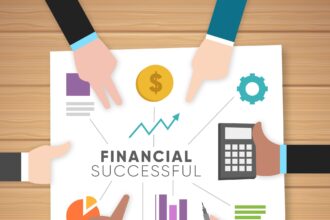
As you explore the intricacies of market predictions, consider how LinkedIn's unique data sets can provide invaluable insights. By analyzing trends from job postings and professional profiles, you're equipped to foresee shifts in various sectors. Imagine leveraging this data to not only understand but also anticipate market demands effectively. How might this influence your strategies and decision-making processes? Think about the potential impacts on your business or career when equipped with such predictive power. Now, what if you could dive deeper into how top industry leaders are utilizing these insights to stay ahead?
Analyzing Linkedin Economic Forecasts

When analyzing LinkedIn's economic forecasts, you'll notice they leverage vast amounts of data from their global network to predict market trends. They utilize not just job postings and hiring patterns, but also subtle shifts in job seekers' skills and interests, painting a dynamic picture of the economic landscape.
You'll find that LinkedIn's approach is unique because it integrates professional profiles and user-generated content, offering a real-time pulse on various sectors. This allows them to generate forecasts that aren't just based on historical data, but also on emerging trends that are shaping the future of work.
As you dive deeper, you'll see that their algorithms assess everything from changes in geographic employment rates to industry-specific growth or decline. This level of detail helps businesses plan more effectively, knowing which skills are becoming more relevant and what types of jobs are in decline.
What's particularly compelling is how LinkedIn uses this data to tailor content and recommendations, enhancing user engagement and providing more value to its members. It's not just about predicting the market; it's about creating a robust platform where professionals can stay ahead, adapt, and thrive amid changing economic conditions.
Industry Leaders on Market Trends
Industry leaders frequently shed light on market trends, offering invaluable insights that can guide your strategic decisions.
You'll find that these captains of industry don't just react to changes; they anticipate them. Whether you're a startup founder or a seasoned executive, understanding these patterns is crucial.
You might wonder, how do they do it? It's all about data and experience. These leaders sift through vast amounts of information, from global economic indicators to niche market data, to spot the emerging trends before they become obvious.
They're not just focused on what's hot now, but what'll be hot next.
Take, for example, the tech sector. Leaders there are pivoting towards artificial intelligence and machine learning, driven by a need to innovate and stay competitive.
They're also emphasizing sustainability, predicting that green technology won't only be beneficial for the planet but will also drive future economic gains.
Sector-Specific Insights From Linkedin

Shifting focus to LinkedIn, you'll discover that the platform offers a wealth of sector-specific insights that are invaluable for honing your business strategy.
As you delve into LinkedIn's detailed industry analysis, you'll find that it's not just about who you know but what you know. Each sector—be it technology, healthcare, or finance—is dissected to reveal key trends, emerging market needs, and the competitive landscape.
You'll get to see which skills are in demand, what kind of expertise companies are hunting for, and how different sectors are evolving.
As you navigate through LinkedIn's user-generated content, pay attention to the thought leaders and influencers within your field. They often share articles, post discussions, and provide commentary that can give you deeper insights into your specific area.
This isn't just passive observation; engage with this content, ask questions, and contribute your views to gain more from the community.
Predictive Analytics and Data Tools
Utilizing predictive analytics and data tools, you can transform vast amounts of raw data into actionable insights. These technologies sift through patterns and trends that you might miss with manual analysis.
By leveraging tools like LinkedIn's analytics, you're not just looking at data; you're peering into predictions that could redefine your market strategies.
Think about the volume of interactions on LinkedIn: each click, comment, and connection forms part of a massive dataset. When you apply predictive analytics, you're essentially predicting future market behaviors based on historical data. You're not just guessing; you're making informed predictions.
These tools also help you understand the "why" behind trends. Why is one sector booming while another isn't?
Predictive models dive deep into the data, using algorithms and machine learning to provide you with answers that aren't obvious at first glance.
Case Studies of Accurate Forecasts

Often, the best way to grasp the power of predictive analytics is by examining successful applications.
Let's look at a few case studies where market predictions have remarkably hit the mark.
In one instance, a major tech company used predictive models to forecast quarterly sales. By analyzing social media trends and previous sales data, the models predicted a significant uptick in demand for their flagship product.
The company ramped up production ahead of their new product launch, which matched the forecasted sales spike precisely, leading to record-breaking revenue without any supply shortages.
Another example involves a finance firm that utilized machine learning to predict stock market trends. By feeding historical data and real-time market sentiment into their algorithms, they were able to anticipate a major stock downturn.
This allowed their clients to adjust their portfolios in advance, safeguarding assets and even capitalizing on the market dip.
These cases show how leveraging advanced analytics can give businesses a substantial edge by forecasting future trends with remarkable accuracy.
You've seen how this technology isn't just about crunching numbers—it's about making informed, strategic decisions that lead to real-world success.
Future Outlooks and Expert Opinions
Building on the lessons from past success stories, we now turn our attention to what leading experts are forecasting for the future of market predictions.
You'll find that the consensus points towards an increasingly data-driven approach. Experts emphasize the integration of AI and machine learning not just as tools, but as foundational elements reshaping how we forecast trends and shifts in various markets.
You're likely to see more personalized prediction models that cater to specific industry needs. For instance, retail and e-commerce might focus on consumer behavior predictions using real-time data analytics, while finance sectors might enhance their risk assessment models to predict market volatility more accurately.
It's all about harnessing the power of big data and advanced analytics to stay ahead.
Furthermore, experts suggest that transparency in how these predictions are made will become crucial. As you rely more on AI-driven tools, understanding the underlying algorithms and data sources will be key in maintaining trust and making informed decisions.
You'll also need to keep an eye on regulatory developments, as increased use of predictive analytics will likely prompt stricter data governance standards.
In essence, the future of market predictions isn't just about advanced technologies, but also about smarter, more responsible use of these tools.
Frequently Asked Questions
How Do Linkedin Predictions Impact Small Business Decision-Making?
You'll find that LinkedIn's predictions can significantly guide your small business decisions by offering insights into industry trends, helping you strategize more effectively and stay ahead in a competitive market.
What Are Common Pitfalls When Interpreting Linkedin Market Forecasts?
You might misinterpret LinkedIn's market forecasts if you overlook their generic nature, fail to consider your specific industry nuances, or ignore the broader economic context that could affect their accuracy.
How Frequently Does Linkedin Update Its Economic Forecasts?
You'll find that LinkedIn updates its economic forecasts quarterly. This regular refresh helps you stay informed with the latest market trends and predictions, ensuring your strategies are based on the most current data.
Are Linkedin's Market Predictions More Accurate for Certain Industries?
You'll find LinkedIn's market predictions vary in accuracy across industries. They're generally more precise for tech and finance sectors due to robust data and active user engagement in these fields.
How to Access Historical Linkedin Forecast Data for Analysis?
To access LinkedIn's historical forecast data, you'll need to check their business solutions page or directly request access through their data analytics team. Ensure you're specific about the data sets you're interested in.
Conclusion
You've now explored how LinkedIn's data-driven insights can guide your market predictions. By tracking industry trends and leveraging predictive analytics, you're better equipped to make informed decisions. Remember, staying updated with sector-specific insights and engaging with industry leaders on LinkedIn will keep you ahead. Keep harnessing these tools and insights to navigate future market shifts effectively, ensuring you remain competitive in a rapidly evolving economic landscape. Stay proactive and informed!






